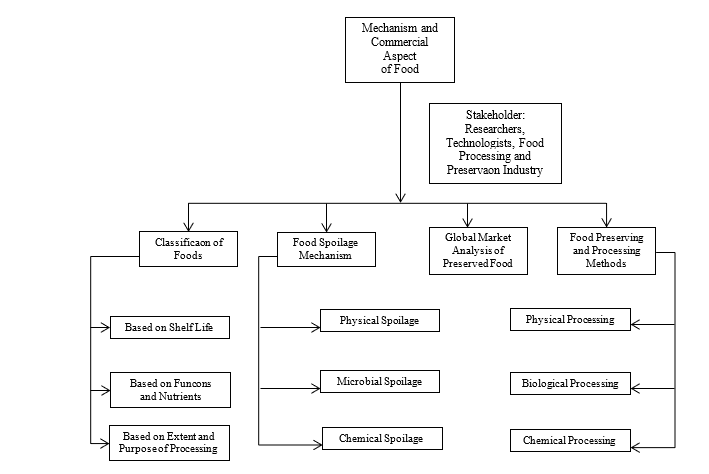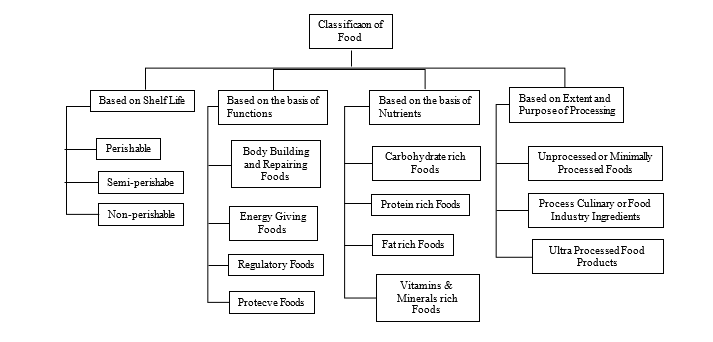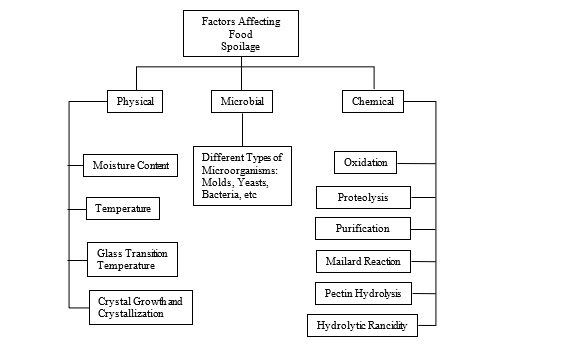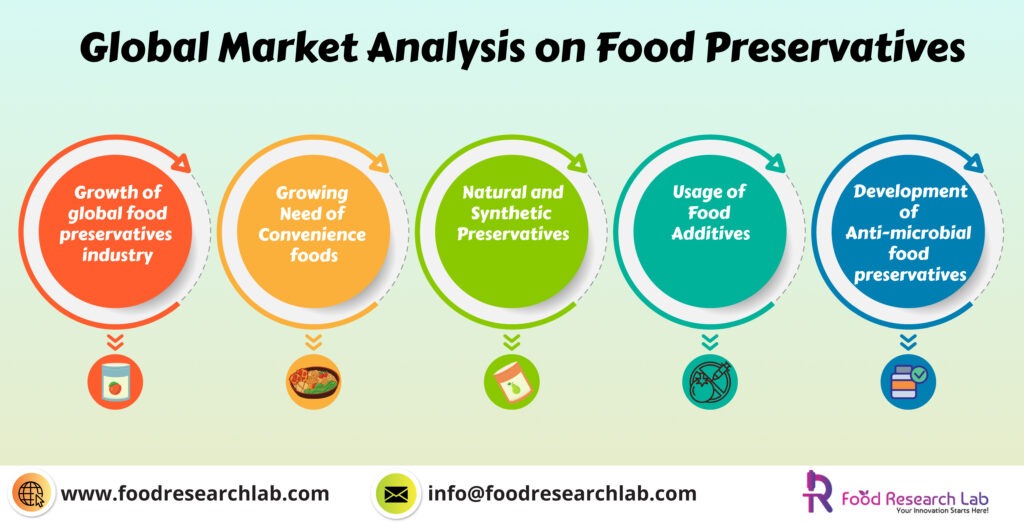Shrimp is a common seafood species that belongs to the Malacostraca, the largest class of crustaceans. Shrimp is high in omega-3 fatty acids, which help people lose weight, lower blood pressure, boost bone and brain health, alleviate eye weakness, and decrease the risk of cardiovascular disease. It also has high protein content and low-fat content. Shrimp industry waste has recently piqued interest due to the presence of valuable bioactive compounds, especially lipids, pigments, and other oligosaccharides [1]. With an annual valuation of over $57 billion, crustacean farming is one of the most important global aquacultures, accounting for roughly 23% of the entire global aquaculture industry (UN FAO Fisheries and Aquaculture Department, 2018).
An Overview of the global food preservative market
Food preservatives are widely used to prolong the shelf life of perishable foods and reduce food spoilage, ensuring that the nutritional content of the foods is maintained. Anti-microbial preservatives stop bacteria from growing, whereas antioxidant preservatives slow down lipid and vitamin content in fruit. Anti-enzymatic preservatives regulate enzymatic processes and prevent chemical enzymes from causing damage. Anti-enzymatic preservatives, for example, prohibit the fruits from ripening before harvesting. Chelating agents bind to trace metal ions, making antioxidant preservatives more efficient. Oils and fats, confectioneries, beverages, seafood, meat, poultry meals, snacks, dairy, frozen products, and other foods all use preservatives.
The global food preservatives industry is forecast to grow at a 3% CAGR from USD 2.6 billion in 2016 to USD 2.9 billion in 2021. The growing need for convenience foods and frozen foods with longer shelf lives has boosted the popularity of food preservative solutions. Preservative demand is expected to rise in response to the worries about consistency and safety requirements. Due to the increasing food and beverage manufacturing sector, cost advantages, raw material supply, China, Japan, and Australia are among the main regional markets targeted by food preservative manufacturers and distributors. This blog presents the broad physicochemical factors of food items and their global market strategies. Figure 1 depicts a flow diagram illustrating different product types, food spoilage processes, food preservation and manufacturing techniques, and a global industry overview of preserved foods. (2)
Food Research Lab is a leading Food Consultants that supports to manufacture high quality and techno-economic feasible food products.

Figure 1: Summary of the research on the mechanisms and developments of food preservation and production [1]
Classification of foods
Foods can be divided into broad categories based on shelf life, functions, and nutritional content, as well as processing mechanisms (Fig. 2). Foods are divided into divisions depending on their shelf life. Food spoilage is a common occurrence in which food loses its colour, appearance, taste, nutritional value, and edibility over time. Food that has gone bad will cause sickness and, in the worst-case scenario, death. Food products may be graded as perishable, semi-perishable, or non-perishable based on their shelf life. (3)

Mechanism of food spoilage
Food preservation is related to food spoilage. Color, scent, taste, texture, or food may all be used to diagnose the early stages of food spoilage. Food spoilage is caused by human, microbial, or chemical behaviour. Since spoilage triggered by one mechanism may induce another, these mechanisms are not inherently mutually exclusive. The main causes of food spoilage are temperature, pH, air, nutrients, and the presence of various chemicals. Figure 3 depicts various factors that influence food spoilage. (4)

Food preservatives classification
Natural and synthetic preservatives are two types of food preservatives. Depending on the target food-spoiling agent, both natural and chemical/synthetic preservation additives may be labelled as anti-microbials, antioxidants, or chelators. Chemical preservatives are expected to hold a dominant market share due to their low expense, varied functionalities, and abundance; nevertheless, rising customer aversion and negative health consequences are among the major factors driving natural preservatives’ faster development. (5)

Chemical preservatives
Preservatives are agents that hinder, retard, or stop the development of microorganisms, as well as any other degradation caused by their presence. Preservatives of food help to prolong the shelf life of certain foods. Preservatives prevent microorganisms from degrading food, allowing it to retain its colour, texture, and taste. Human and chemical food preservatives can be distinguished. Various chemicals found in animals, plants, and microorganisms may be used to protect food. They’re also antibacterial, vitamins, and flavourings. The roles of various natural reagents as food preservatives are mentioned in Table 1.(6)
Table 1: Lists of natural preservatives [1]
| Natural preservative | Example of food items | Functions |
| Salt Sugar | Salted fish Jam | Salt and sugar draw the water out of microorganisms and retard the growth of microorganisms. |
| Vinegar | Pickled mango | Vinegar provides an acidic condition which creates an unfavourable condition for microorganisms. |
| Rosemary extract | Mayonnaise, margarine, oils and fats, etc. | Rosemary extracts work as an antioxidant. |
Food additives
The primary goals of using food additives are to boost and preserve nutritional value, improve efficiency, minimize waste, increase consumer acceptability, make food more accessible, and make food processing easier. Food additives are natural or synthetic chemical compounds deliberately added to foods during fermentation, preparation, or storage to achieve desired improvements in their properties. There are two types of food additives: deliberate and unintentional. The government specifically controls intentional additives. Table 2 lists the various forms of food additives as well as their potential uses. (7)
Table 2: List of food additives [1]
| Type of additive | Purpose | Example |
| Emulsifiers, stabilizers and thickeners | Impart a consistent texture to products; prevent separation of food | Algin, carrageenan |
| Anticaking agents | Enable products such as table salt to flow freely | Calcium silicate |
| Nutrients | Enrichment (replacement of nutrients lost during processing) and fortification (adding to the nutritional value of foods) | Folic acid, beta carotene, vitamin D,iron, iodine, etc. |
| Preservatives | Retard spoiling, prevent fats and oils from becoming rancid, prevent fresh food from turning brown | Nitrates, parabens, BHA, BHT, etc. |
| Leavening agents | Cause bread and baked goods to rise during baking | Sodium bicarbonate |
| Flavouring agents | Enhance the flavour of foods | Monosodium glutamate (MSG) |
| Sweeteners | Add sweetness with or without extra calories | Sucrose |
| Fat replacers | Impart texture, and creamy ‘mouth feel’ to food | Cellulose gel |
Anti-microbial food preservatives
Anti-microbials primarily hinder or impede the development of microorganisms, thus preventing food spoilage. Compounds including calcium propionate and sorbic acid found in baked goods, salad dressings, cheeses, margarine, and pickled vegetables are examples of anti-microbial agents. Anti-microbials such as Naringenin producing Saccharomyces cerevisiae strain (a GRAS organism) [Naringenin, phenylacetaldehyde, phloretic acid and homogentisic acid] are also used as preservatives in the food industry to prolong shelf life, enhance product protection, sustain product consistency, lower production costs, and improve export goods internationally in diverse supply chains. Anti-microbials account for a considerable portion of the market due to their widespread use in various uses, including dairy and frozen foods, snacks, and convenience foods. One of the main factors of this segment’s development is consumer demand for packaged foods.
Preservatives for perishable products
Sodium nitrite is a primary preservative found in cured meats, sausage, and ground beef. When sodium nitrite is applied to meat or fish, it kills toxins and interacts with the proteins. Pathogens can be reduced by using solutions used by meat producers to increase shelf life and flavour. Meat preservatives are widely used because meat is a widely eaten food globally, with heavy use in major regions such as North America, Asia Pacific, Europe, and Latin America. In these areas, the economy is improving, allowing consumers to buy meat regularly.
North America is the leading market
The North American market for natural antioxidants is predicted to be the most robust between 2016 and 2022. The Asia Pacific market is expected to rise at the fastest pace. The growing demand for convenience foods is projected to affect the North American food preservatives industry significantly. Consumers are looking for convenience foods that are minimally processed and have a long shelf life. This has increased the need for suitable food safety initiatives in the field, prompting producers to look at newer innovations and additives that may be effective substitutes for synthetic preservatives.
Food Research Lab supports to select and find balance between ingredients and suggest for a flavourist for your product development.
Recent Developments
- Galimax Flavor V-50, a new product from Galactic, was added to the market. It’s a preservative that can be seen in various salads, from pasta salads and potato salads.
- In Belgium, Kemin has launched a new quality management lab, distribution, and logistics office. This aided the firm in providing quality service to its consumers by increasing the pricing of its goods.
- Chemical Associates Inc.’s properties were bought by Univar (US). The strategic purchase was intended to help the company expand its market reach by targeting new market categories in the food, personal care, and other sectors. This would aid in the expansion of the company’s current product line in the United States.
- The new technologies used to extend the shelf life of foods include irradiation, high-pressure food storage, and pulsed electric field effect. As dietary additives and preservatives, various chemical reagents have been added. However, there is increasing controversy over chemical additives and preservatives in food due to potential health risks.

Let’s create something Innovative and Delicious together
Food Research Lab strives for excellence in new Food, Beverage and Nutraceutical Product Research and Development by offering cutting edge scientific analysis and expertise.




